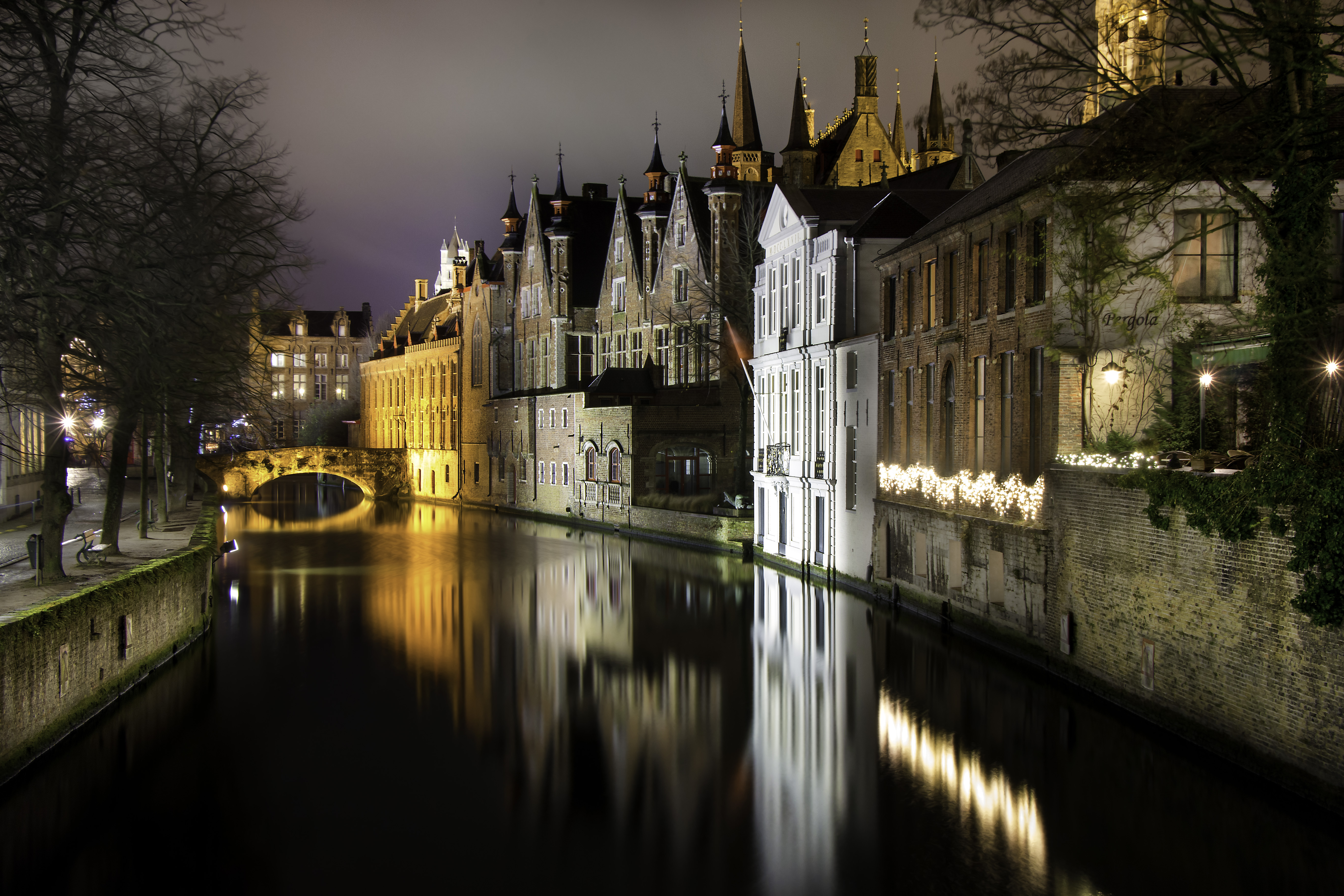
The iconic Grand Place radiates festive spirit.
Christmas in Brussels to me is candied orange slices, the aroma of cloves and cinnamon, speculoos – a sort of gingerbread, and chocolate brioche eaten at breakfast.
Despite the recent terrorist lockdown, Les Plaisirs d’Hiver has stayed open in the centre of town, like it has every year, filling market places with lines of wooden huts selling mulled wine and hand-made Christmas decorations. A giant Christmas tree is craned onto the Grand Place and a reproduction of the barn in which Christ was born, complete with live cattle and a Mary and Joseph elected from the local parish, is built beneath the town hall, a tradition that can be traced back to the late Middle-Ages.
Brussels’ charm comes from its lovingly preserved medieval traditions which may be messy and noisy, but decidedly popular. If you happen to be in Belgium towards the end of November or the start of December, you will doubtlessly run into one of the many parades of university students celebrating the Saint Verhaegen by walking through town banging pots and pans together. They will be wearing masks and singing drinking songs, asking passers-by for ‘a coin’ to pay for a pint of beer. It is a tradition established by the university in the nineteenth century in order to control rowdy students who had previously run a-mock the town terrifying primary school students.

The Atomium. Visitors can explore inside the tubes and spheres.
The famous Grand Place is an obvious first stop, as well as the Notre Dame Cathedral. Slightly less famous is the Atomium, a massive steel construction in the shape of an atom from the top of which you can see the entire city. If you stay after Christmas and make it to January or February you may be able to catch one of the many carnivals, or the marching of the cardboard giants through the cobbled streets, or the ritualised slaying of the dragon by Saint Michel.

The traditional mussels in cream and leek sauce
For food, head over to Chez Leon (http://www.chezleon.be/en/) for the traditional mussels in leek and cream sauce, served with fries – bearing in mind that mussels are best eaten during the months finishing in “er” (September to December) – something that every Belgian child knows! You could also head over to Le Falstaff (http://www.lefalstaff.be/) for carbonade, a Dutch stew made up of diced beef cooked in beer and brown sugar. Travelling away from the town centre, Cook & Book (http://www.cookandbook.be/), in the quiet residential area of Woluwe Saint Lambert, is heaven for book lovers, and the baraques a frites, a sort of chip van, usually parked on market-places or on street corners, should be your first stop before any Belgian night out. When it comes to chocolate, the Belgian chocolate-maker Pierre Marcolini is a personal favourite. His boxes of chocolate are a little more expensive than what you can find in smaller shops, but definitely worth it for a special treat!
Place Flagey, in the borough of Ixelles, is the beating heart of student night-life. A wide market-place lined with cafes, bars and clubs, this should be your first stop if you want to avoid the overly expensive and touristic bars in the centre of town. The Belga is particularly famous for its craft beers and live music, and similarly Le Pantin (http://www.lepantin.be) is great for tapas. The bars on the university campus of Alma are different; usually you will end up stuck with other students in the basement of one of the student accommodation or in the student union drinking cheap beer from plastic cups. Still, a great place for a good laugh and dancing all night!
Your best bet for a cheap but comfortable hotel or hostel in Bruxelles is to get away from the centre and into the more residential areas. The Train Hostel (http://trainhostel.be/) in Schaerbeek, is perfectly situated if you want to be close to the centre of town but also enjoy a quiet night’s sleep. I would know, as this is literally two minutes away from where I grew up! Closer to the Grand Place, you can find Hello Hostel (http://hello-hostel.eu/), which is not only stylish but practical!

Visit Bruges’ stunning canals for a day-trip.
Public transportation, the crowning achievement of Belgian organisation, is probably the only reliable project our government has come up with. The metro, cheap and usually punctual, is the only way to get to the touristy centre since it became pedestrian-only last year. Packed with students, workers and suspicious-looking men who will try to sell you vegetables, it is probably the most authentic view of Brussels and its inhabitants you will get. The train will get you to the neighbouring cities for a day-trip, whether it is to Bruges to sail on the canals and see the beautiful medieval architecture, or Antwerp for shopping, or even to the seaside if you are feeling brave.
Remember English is the best way for you to communicate! Belgium has three official languages, and people in Brussels have certain issues with those who use the wrong language to speak to them. If you try to speak French to a Dutch-speaker you will most certainly offend, and if you speak Dutch to a French-speaker, they may pretend to have not understood you!
Most importantly, explore! Wonder away from the main roads, go and sit in interesting-looking cafes or restaurants, hop onto the metro and hop off at a random station, enjoy the Art Nouveau architecture, the second-hand book shops, the street vendors selling waffles and fries. Oh, and drink plenty of beer.
———
Like to write for The Bubble? Email us at travel@thebubble.org.uk with your ideas or to join our mailing list.